English | Dutch |
|
| Finally: we see the Great Bustard | |
Ourique (Portugal) to Alhaurin el Grande (Spain), April 2016
|
|
| |
|
In early April we arrive in Portugal. Directly on the border, we visit the tourist information centre to find out what the exact rules are concerning the expensive toll roads in Portugal. We want to avoid them as much as possible. Like with more things in Portugal, the roads are privatized under pressure from the European Union. The result is that the expensive toll roads are almost empty, while the outdated local roads are busy and run through all the small towns and villages, with long traffic jams as a result. When it went economically bad with Portugal, they had to privatize many of their public goods under pressure from Europe. This happened among other things to their best roads and utilities, like gas, water and electricity. The result is that the prices of these services have exploded, making it now the reality that many of the poorer families in Portugal, and there are quite a few of them, spent more than a third of their disposable income on gas, water and electricity. The weather is bad when we arrive in Portugal. It rains frequently and it's cold. We drive to the town of Ourique where we can stay in a vacation home of friends. A solid roof over the head with this type of weather, is more comfortable than camping in a tent. Portuguese people told us that the winter was extremely dry and hot this year, and that the rain has started to fall later in the year. And that’s now. That’s not so nice for us, but literally a godsend from heaven for the residents of this area. The few days that the weather is nice, we fully enjoy the beautiful region. The southern part of the Alentejo region, where we stay, is only an hour's drive from the Algarve, but a world of difference. While the Algarve is now a popular holiday destination and well developed, the Alentejo is a quiet rural area where time seems to have stood still at least fifty years. |
|
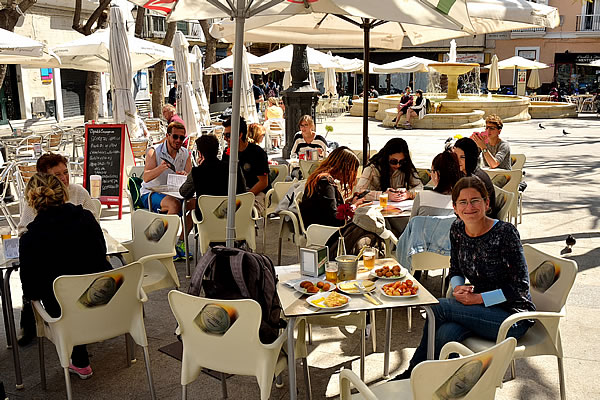 |
|
Tapas in Cadiz |
|
The main reason for us to come to the Alentejo in this period of the year, are the Little and Great Bustard. These birds have become rare in Europe, but are relatively easy to see on the pseudo steppes around the town of Castro Verde. And the bonus of a visit at the end of March or early April is, that you can admire the birds during the mating period. And that is a real spectacle, especially because the Great Bustard has a mating dance that would not look out of place in the realm of the Birds of Paradise. The male turns himself almost literally inside out, making it look like a huge foam bath on feet. He also starts to shake in order to be more attractive to the females. This is all done on the bare pseudo steppes, which means that you can experience this fabulous mating dance from a distance is you have good binoculars. This is a very special wildlife experience at the edges of Europe. After having explored the southern part of the Alentejo, we drive to the Algarve, and we camp in Olhão, in the shadow of Faro. The weather is still changeable, but there are still a few things we can see in the area. We also have a small problem with our Toyota jeep. One of the rear axle shafts is worn and needs to be replaced. We are fortunate that the parents of Edwin planned a visit to Malaga in Spain for late April, so we asked them to bring a second hand axle shaft from the Netherlands. From now on, we do not drive more kilometres than necessary to ensure that we are going to reach Malaga without a real break down. We drive back into Spain and settle down for a week in the Doñana National Park, located southwest of Seville. The weather is still very unpredictable, and we regularly spend a day in the tent. But during the dry hours of the day we see beautiful waterfowl in the various lagoons of the national park. |
|
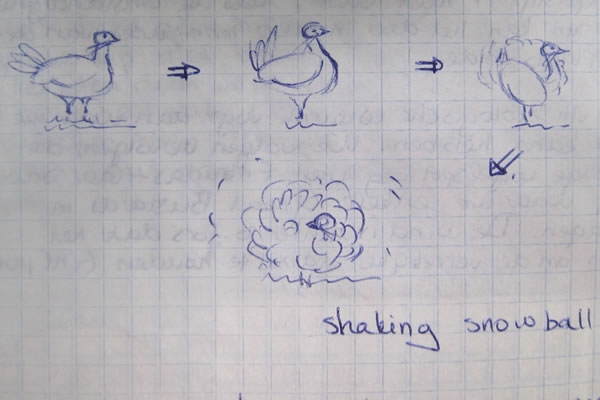 |
|
Ivonne's presentation in her diary of the mating process of a Great Bustard |
|
| The visit to Seville is a little bit disappointing. We had high expectations, but what we realised once again is that this type of destinations has become too busy for us. Spending hours waiting in line for a visit to a cathedral, almost run over by one of the many city tour buses that crisscross the city, inflated prices for a simple tourist menu and begging gypsies at the tourist sights, is not really a destinations for us. We spent a few days in the city and especially spend a lot of time on terraces at strategic points, to see with open mouth how the tourism industry is in full swing in Sevilla. Slowly but surely we come near Malaga. We go for a few days to Marbella, to visit this famous, or is it now an infamous city. Once a magnet for the wealthy people of Europe to have a second home or a yacht, but nowadays, since the economic crisis of 2008, it is a city in a schizophrenic position. Will it ever be the glamor destination gain of yesteryear? Or is it becoming a destination for the rich and non-classy Russians and Chinese people, who earned their money with shady businesses? We experienced the town especially as an outdated and over-the-top resort town. In Malaga we meet Edwin’s parents who brought the axle shaft without any problems by plane from Brussels. As a result of the terrorist attacks of last month, there was a lot of security at the airport of the Belgian capital city, but the bazooka-like axle shaft was accepted without problems. We stay a few days on the holiday address of the parents of Edwin, where we replace the rear axle shaft in a few hours’ time (see also the article on the axle shaft), so we can hit the road again. |
|
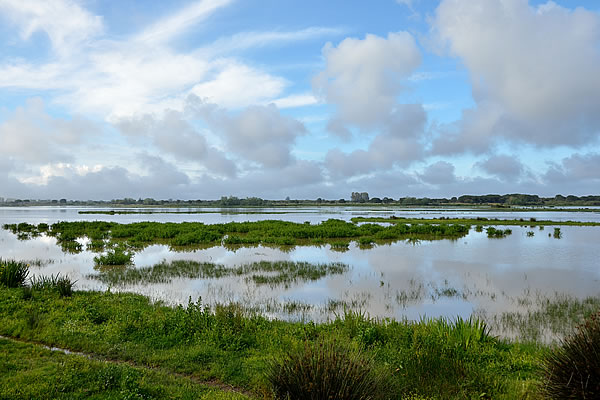 |
|
A laguna at El Rocio in Doñana NP |
|
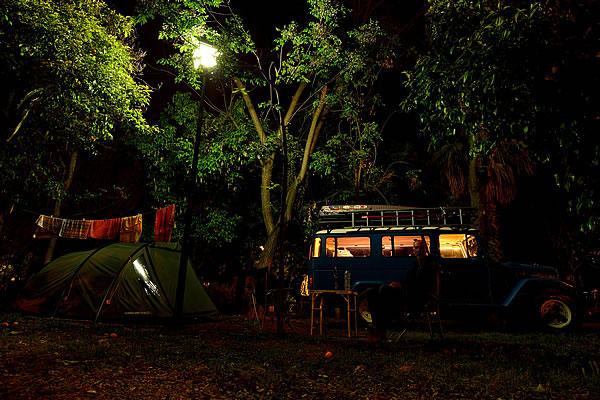 |
|
Camping on the city camping in Sevilla |
|
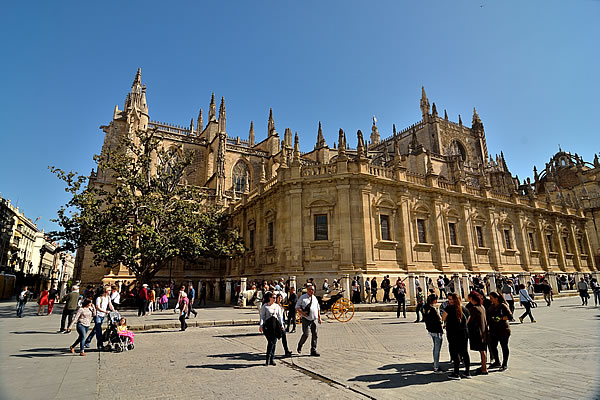 |
|
The cathedral of Sevilla |
|
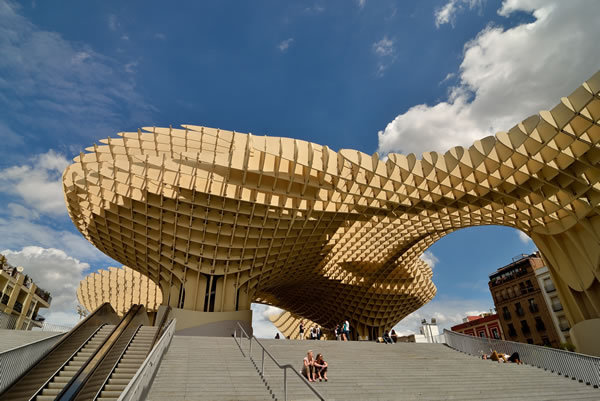 |
|
Modern architecture in Sevilla |
|
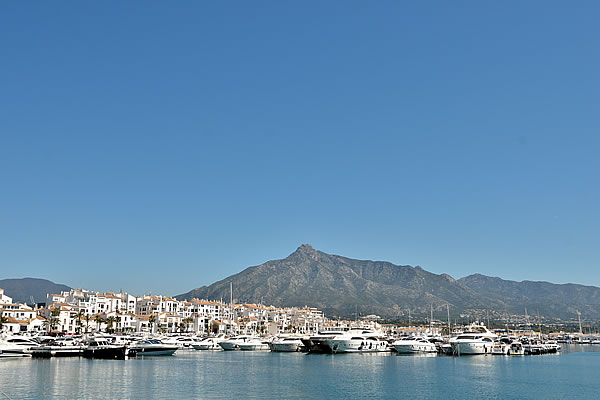 |
|
View on the Puerto José Banus in Marbella |
|
| <Previous weblog> | |